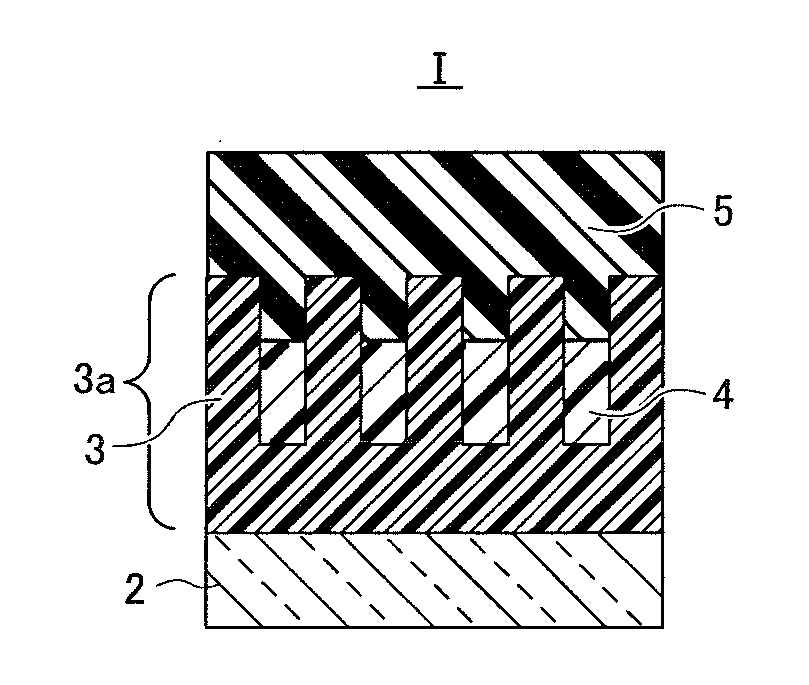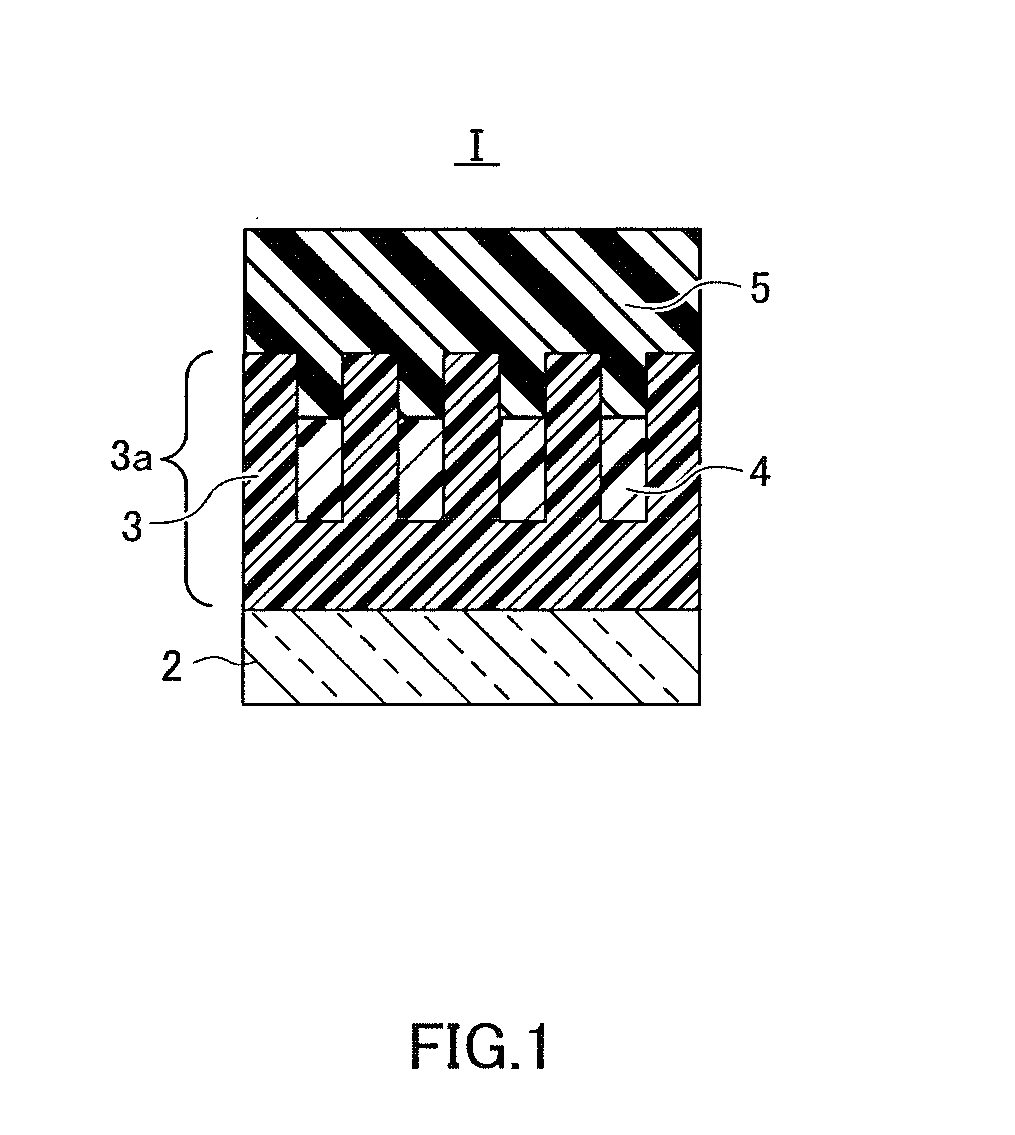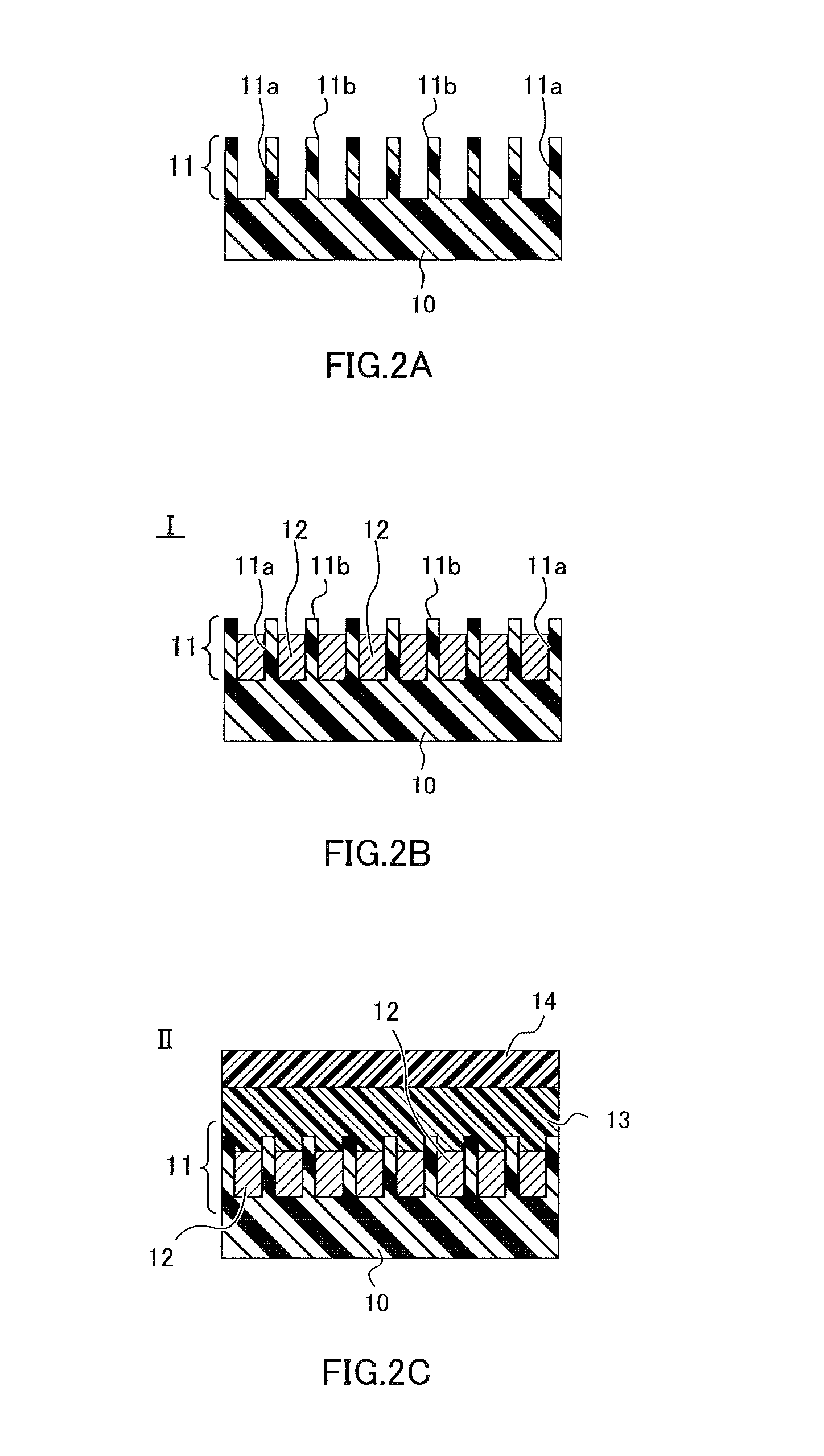Transfer method and thermal nanoimprinting apparatus
- Summary
- Abstract
- Description
- Claims
- Application Information
AI Technical Summary
Benefits of technology
Problems solved by technology
Method used
Image
Examples
Example
First Embodiment
[0196]FIG. 14 is a schematic view showing the thermal nanoimprinting apparatus pertaining to a first embodiment. The thermal nanoimprinting apparatus 200 is provided with a feeding roller 202 on which a long fine-pattern-forming film 101 is wound. The feeding roller 202 sends out the fine-pattern-forming film 101 at a predetermined speed. A take-up roller 203 paired with the feeding roller 202 is provided for winding the sent fine-pattern-forming film 101. The rotation speed of the take-up roller 203 and the rotation speed of the feeding roller 202 may be controlled so that the delivery speed and the take-up speed of the fine-pattern-forming film 101 are synchronized, but a dancer roller, a torque motor, a tension controller, or the like can be used to control the tension of the fine-pattern-forming film 101. The mechanism for conveying the fine-pattern-forming film 101 may therefore be designed, as appropriate, in accordance with the tension control scheme employed....
Example
Second Embodiment
[0242]FIG. 18 is a schematic view showing the thermal nanoimprinting apparatus pertaining to a second embodiment. In the description below, constituent members that are the same as those described in the first embodiment are referred to by the same reference numerals, and no description thereof will be given.
[0243]The thermal nanoimprinting apparatus 300 pertaining to the second embodiment differs from the first embodiment in that a cutting part 501 is provided.
[0244](Cutting Part)
[0245]As shown in FIG. 18, a cutting part 501 is provided downstream from the laminating part 201 and previous to the take-up roller 203 in the conveying direction MD. A gap sufficient for jointly providing an energy-ray irradiation part or other optional constituent element is preferably provided between the rotating body 102 and the cutting part 501, or between the take-up roller 203 and the cutting part 501.
[0246]The cutting part 501 completely or partially cuts the fine-pattern-forming...
Example
Third Embodiment
[0263]The thermal nanoimprinting apparatus pertaining to a third embodiment will next be described in detail with reference to the drawings. The thermal nanoimprinting apparatus pertaining to the third embodiment has a peeling part 206, the same as in the thermal nanoimprinting apparatus 200 pertaining to the first embodiment. Constituent members that are the same as those described in the embodiments above are referred to by the same reference numerals, and no description thereof will be given.
[0264]FIG. 20 is a schematic view showing the thermal nanoimprinting apparatus pertaining to the third embodiment. The thermal nanoimprinting apparatus 600 pertaining to the third embodiment is provided with a feeding roller 202 on which a long fine-pattern-forming film 101 is wound. The feeding roller 202 sends out the fine-pattern-forming film 101 at a predetermined speed. A take-up roller 203 paired with the feeding roller 202 is provided for winding the sent fine-pattern-f...
PUM
| Property | Measurement | Unit |
|---|---|---|
| Temperature | aaaaa | aaaaa |
| Force | aaaaa | aaaaa |
| Width | aaaaa | aaaaa |
Abstract
Description
Claims
Application Information
 Login to view more
Login to view more - R&D Engineer
- R&D Manager
- IP Professional
- Industry Leading Data Capabilities
- Powerful AI technology
- Patent DNA Extraction
Browse by: Latest US Patents, China's latest patents, Technical Efficacy Thesaurus, Application Domain, Technology Topic.
© 2024 PatSnap. All rights reserved.Legal|Privacy policy|Modern Slavery Act Transparency Statement|Sitemap



